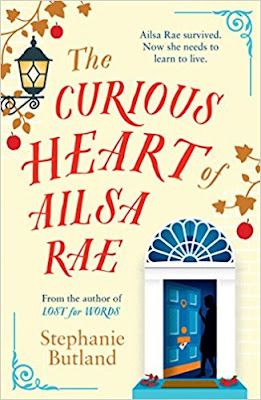Gail Aldwin is an award-winning writer
of short fiction and poetry. As Chair of the Dorset
Writers’ Network she supports writers by connecting creative communities. She
is a visiting tutor at Arts University Bournemouth and author of Paisley Shirt a collection of short
fiction. This collection was long listed in the best short story category of
the Saboteur Awards 2018.
Paisley Shirt is a fascinating collection of
twenty-seven stories that reveal the extraordinary nature of people and places.
Through a variety of characters and voices, these stories lay bare the human
experience and what t is like to live in our world.
"I had my
favourites – I thought “Stone” was
wonderful, perhaps the shortest but, for someone who reads with the heart as I
do, the emotional impact was immense. “Accidental Brother” moved
me deeply too – its construction perfect, and a story I’d be happy to see
expanded into something a little longer. “Packing” is perhaps
the simplest – a list, rather than a ‘story’, but with so much meaning in the
content…I’d urge anyone to step outside their comfort zone a little, and take a
closer look at short fiction – and if you’re looking for an introduction, I
doubt you’ll find much better than this beautiful collection from Gail Aldwin." - Award-winning book blogger, Being Anne
Thank you to Gail for joining us in conversation. We wish her all good things with the lovely Paisley Shirt and forthcoming novel.
Tell us of your journey as a writer
I started as a letter writer. In 1981, l left London to travel overland
to Kathmandu on a double decker bus. We were stuck in France for three weeks
waiting for visas to be issued so that we could cross Iran and then the
adventure began. My mum stored all the letters I wrote in box files and later
when I was studying to become a teacher, I used the anecdotes contained in the
letters as a basis for short stories. The short stories turned into novels and
eventually I began to write about imagined characters and situations. I now
write novels, short fiction and poetry. I also co-write comedy sketches.
How do you see your role as a writer and what do you like most about
it?
I have important stories to tell about the human qualities of resilience
and trust…and I enjoy being in a strong position to share these stories.
Have you ever created a character who you dislike but find yourself
empathising with?
I haven’t actively disliked any of my characters but some of their
behaviours are appalling. I dig deep to find the vulnerability and frailty that
causes my characters to make horrible mistakes. Some of these mistakes can be
rectified while others compound to make the character burdened.
What has been your experience of writing about diverse characters?
My stories include issues such as domestic violence, alcoholism, homelessness
and disability. I aim to create unique characters without stereotyping them.
If you could be transported instantly, anywhere in the world, where
would you most like to spend your time writing? And why?
So long as I have a desk, a comfortable chair and a laptop, I’m happy to
write anywhere. Sometimes idyllic locations cause more distraction from writing
than my little room at home.
What is the one book you wish you had written?
I’d like to write as well as all the authors I admire but keep my own
subject matter. There are many influential books so I can’t nail it down to
one. My most recently read favourite novel is Out of Africa.
What advice do you have for would be novelists/writers?
Enjoy being part of a writing community through membership of writing
groups and links on social media. Share resources and information about
competitions and open submission windows. Celebrate your own successes and
those of others. Appreciate the intrinsic satisfaction that comes from writing.
What are you currently working on? What can we look forward to
reading?
I’m working on a novel called This
Much I Know with a six-year-old narrator called Mikey. He responds to the
friendly approaches made by a disabled church member because he is lonely.
Mikey’s parents are suspicious of Leonard which leaves Mikey completely
confused. The novel explores issues of trust and questions why it is becoming
increasing difficult for adults to talk to children without raising concerns.
Who is your favourite literary character from childhood and why?
At school I was made to read by learning phonics. This became nothing
more than hard work and I never saw books as a source of interest. As a result,
I didn’t read for pleasure until much later. When I became a teacher, I liked
to share books that challenged and engaged children. One of my favourite
characters is the protagonist in The Turbulent Term of Tyke Tyler but I can’t
tell you why as that would spoil the surprise.
Follow Gail on Twitter: @gailaldwin





